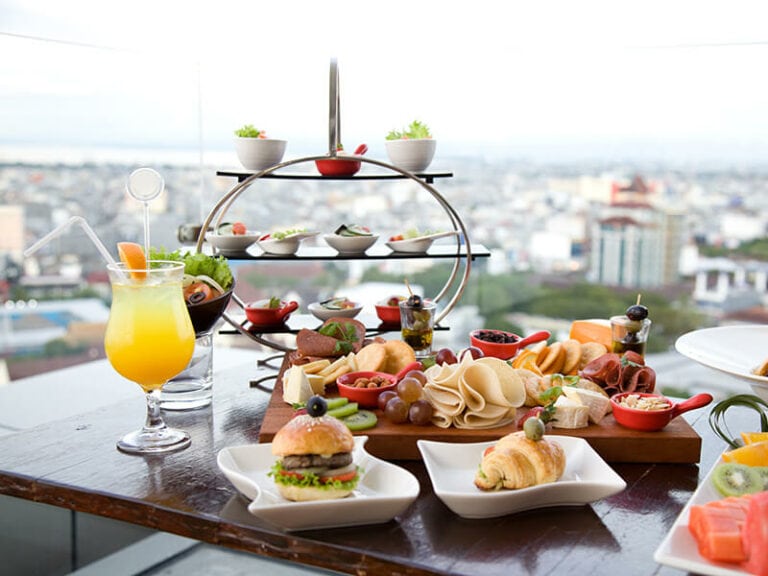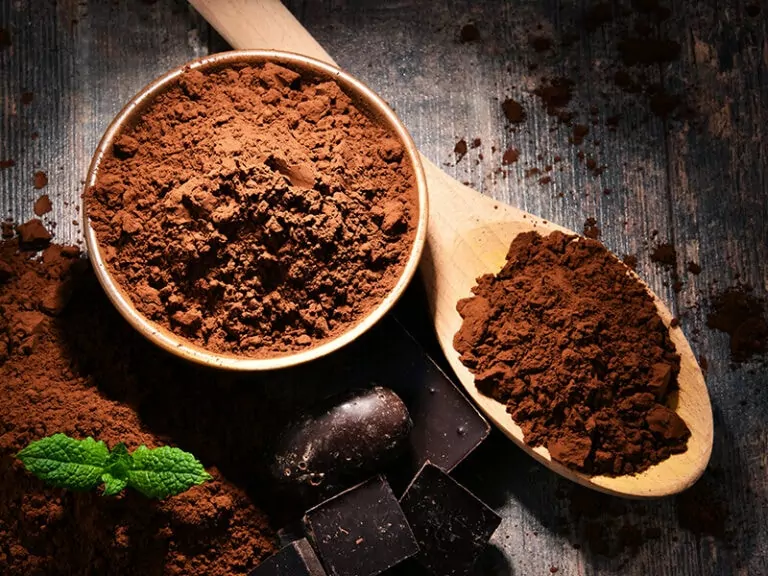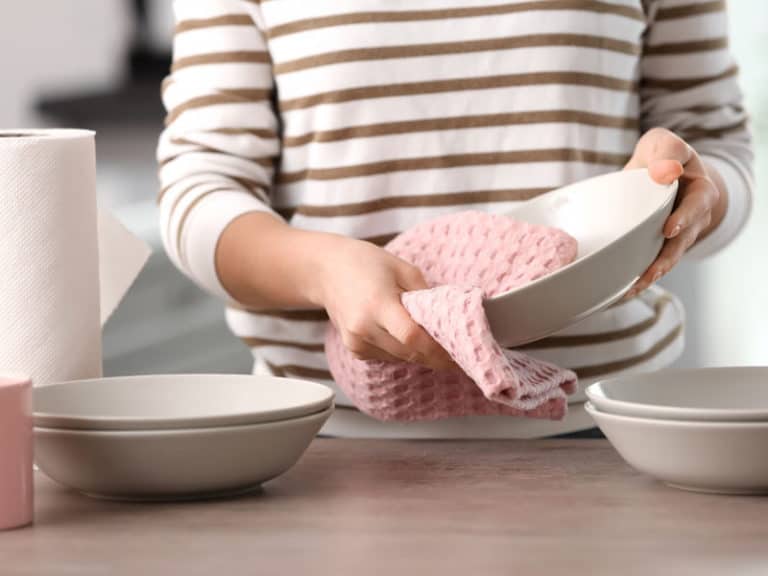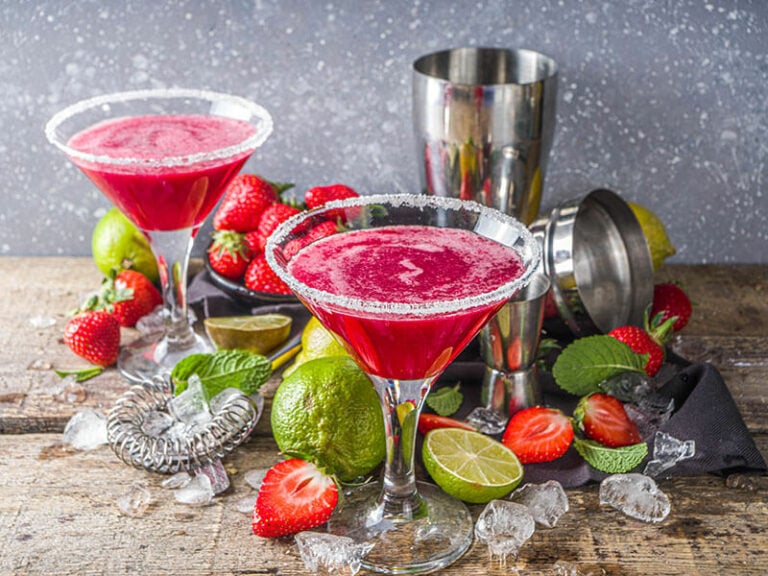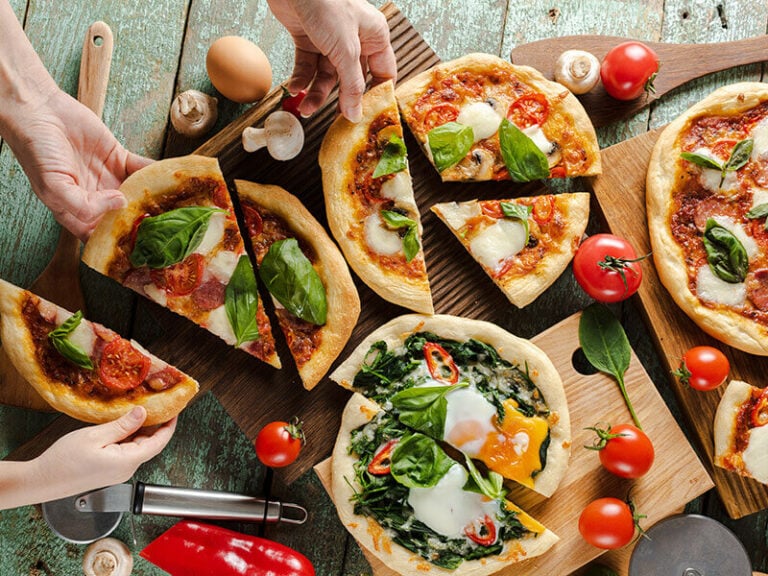If you are Chinese, you might be familiar with this controversial battle of Mei Fun vs. Chow Fun. However, for those people in the rest of the globe who are genuinely interested in the meanings and origins of these two “funny” names, I am here to answer your questions.
And even if you were already a fan of Mei Fun or Chow Fun, this article might convince you otherwise and make you fall in love with the other.
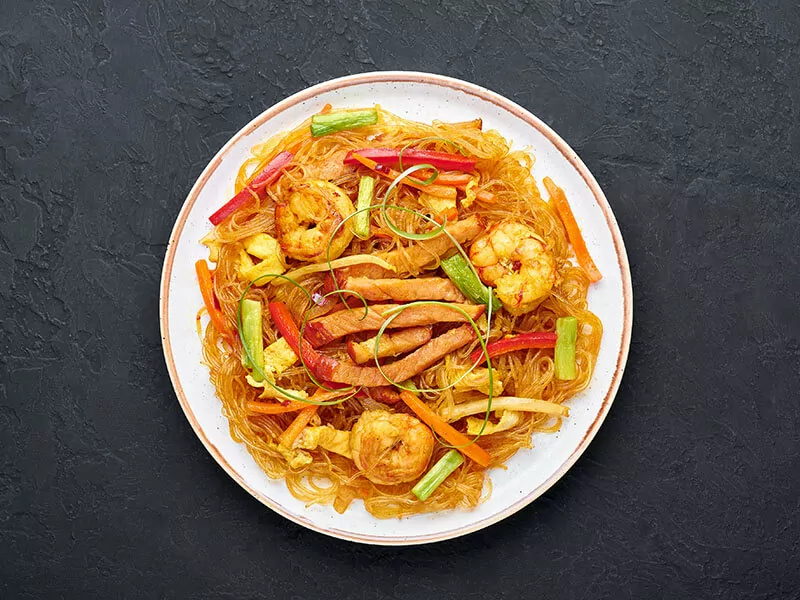
What Is “Fun”?
“Fun” in Chinese is generally known as noodle, “Mei” and “Chow” are just like the prefix in English. When you add them to the main word “Fun”, you have “thin rice noodle” or “wide rice noodle”.
Additionally, Chow Fun noodle has an alternative name called Ho Fun which is basically the noodle that every chef uses in their Chow Fun dishes. Chinese foodies, in general, would know about these “fun” as the name of dishes rather than the noodles themself.
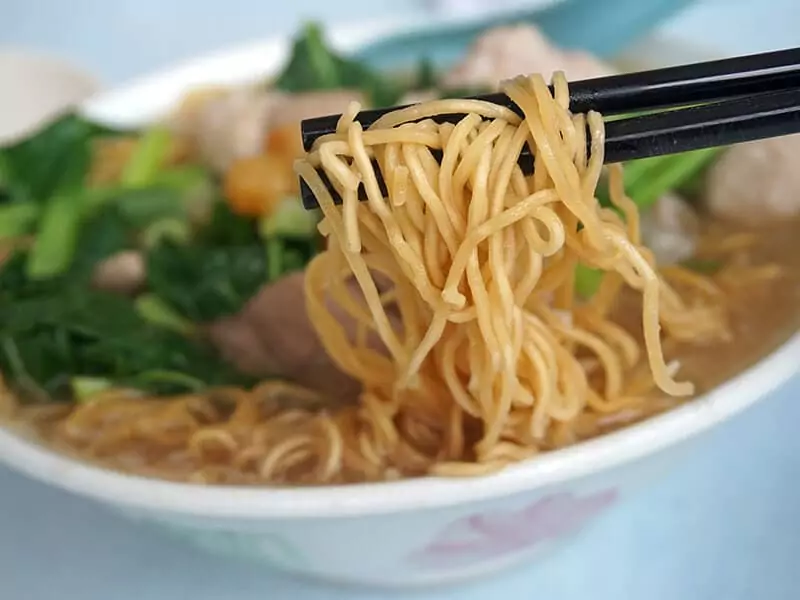
So What Makes These Two “Fun” Special?
The noodles themself are sophisticated but to decide that these “Fun” are special enough to earn the same position as those most renowned dishes of Chinese cuisine + (Chinese Foods), here I have 6 criteria to help you make the fairest decision.
At first, the two noodles might look a lot alike since they are both from China and have similar builds. But hold your fear of confusing these two “Fun” when you buy them at the malls or street markets, I am here to walk you through everything about these special noodles.
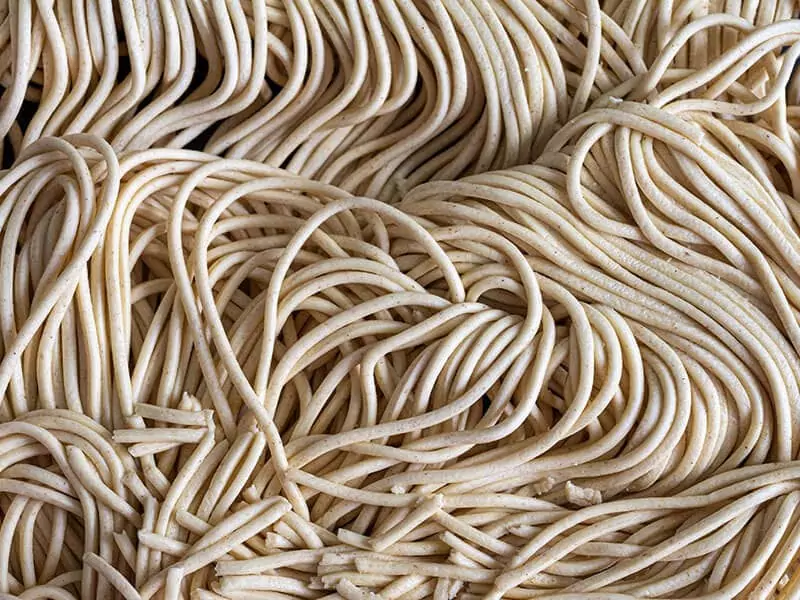
Similarities Between Mei Fun And Chow Fun
Let me introduce you to some trivia criteria because they will come in handy later as you will know how to preserve your “Fun”, where to buy the freshest, most delicious, and last but not least, how to eat them culturally correct.
How Long Before Your “Fun” Goes Bad?
Fabricated Chinese noodles, in general, could last for at least 1 year frozen. Take Chow Mein, for example, which is a very similar variation of noodles to Chow Fun that is made from eggs. It can last 1 year in frozen condition. (1)
In terms of dried noodles, Mei Fun is still edible before package opening within a 2-3 years period, and the same goes with Chow Fun. However, if you want to keep your leftover Mei or Chow Fun in the refrigerator, 3-days time is acceptable.
But when it comes to fresh noodles, these are easy to rot. If you don’t have time to cook your fresh “Fun”, sooner or later, they definitely will go ill after a few days.
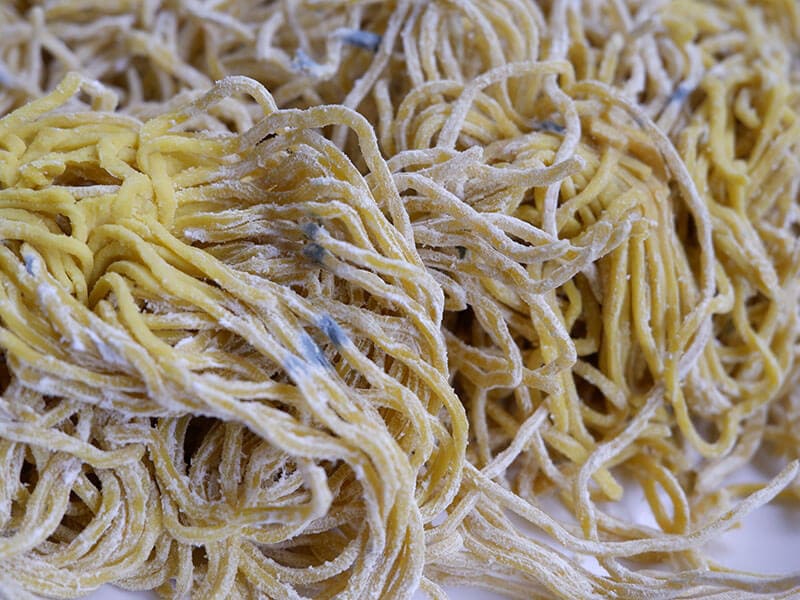
Which One Is Healthier For You?
Do you know that 152 grams of Chow Fun noodles, which contain about 25 grams of carbs and well over 7 grams of fat, would require roughly 56 minutes of walking to burn off? Not to mention various heavy sauces that go with the dishes. (2)
And if you just finished a plate of 440-gram Mei Fun, I’m afraid you have to bike for more than an hour to burn them all. (3)
Regardless of which variety of noodles + (types of noodles) you eat, they are all carbohydrate-made, and as a matter of fact, they usually take a longer time to burn. So eat your top-picked “Fun”, still, don’t forget to do exercises seriously.
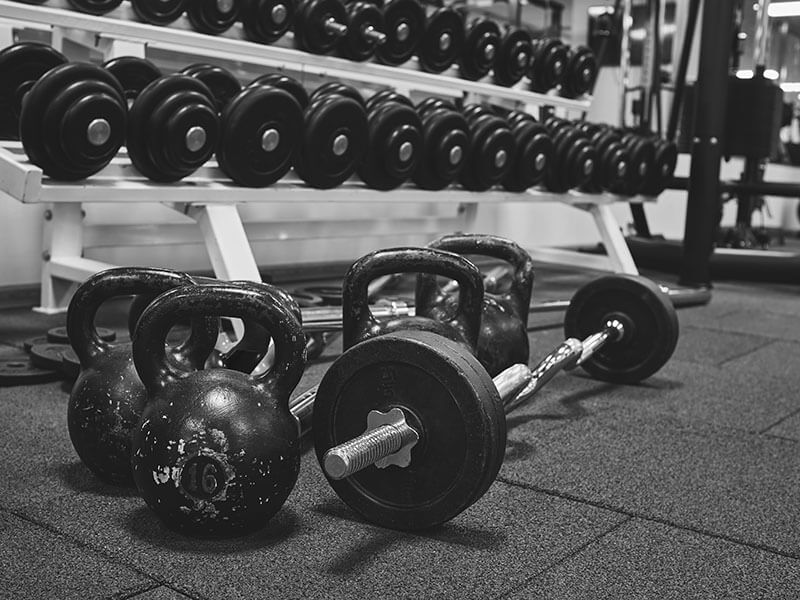
Anyway, one good news for those who are gluten-intolerant, these noodles are made from rice, so; basically, they are gluten-free. Eat them all you like; however, be cautious with their sauces because they usually contain wheat-based ingredients.
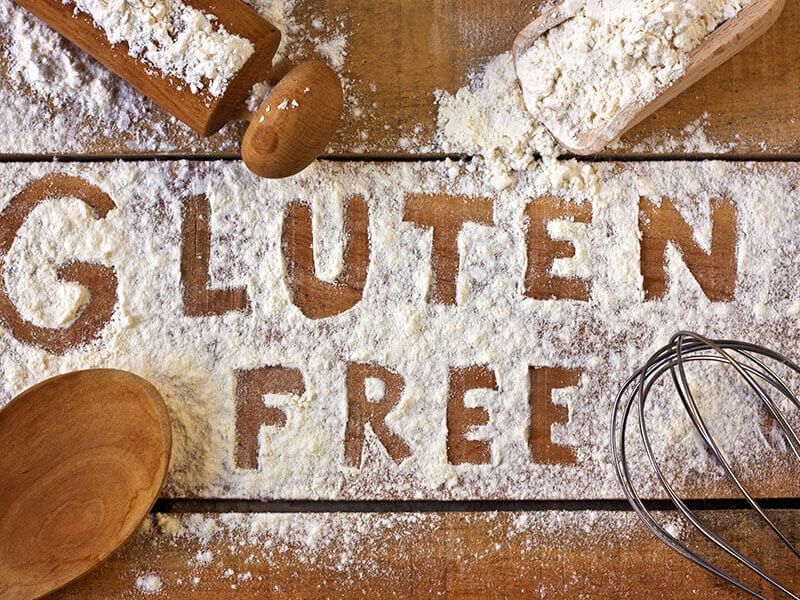
Where To Buy?
You can find these Mei Fun and Chow Fun noodles sold in bundles or long strips at any Asian market. Although they are rooted in China, they are just as popular across any other Asian country like Vietnam, Thailand, Singapore, and Korea.
Other alternative names for Mei Fun are num-banh-chok (Cambodia), bún (Vietnam), etc. Hence, knowing some Mei Fun names in different languages is recommended, and this “Chinese noodles recognizing game” would become a piece of cake.
Plus, imagine how cool you will look when you pull off your language skills by telling the shop owner the exact local name of your favorite noodles.

How To Eat These “Fun” Like A Pro?
Besides, no matter how the textures are different between these two “Fun”, whether Mei Fun is too chewy for your personal taste or Chow Fun is too fragile to eat, I still strongly suggest enjoying them with a pair of chopsticks because that’s how most Asian people eat noodles.(4)
What’s more, I suggest buying fresh or raw Chow Fun from those professional noodle makers at the street markets who make this kind of noodle from scratch. The strips of Chow Fun you pick from the street markets will be fresher and look more reliable than those from the supermarkets.
If you’re a newbie and have no idea how to use chopsticks, learn how and become a chopsticks expert.
Differences Between Mei Fun And Chow Fun
Here are a few specifics that will cause these two noodles, which from your previous view appeared to be identical, to look completely different. Check out the below table for some insightful information as you are about to learn everything there is to know about these two.
Whenever you are ready, allow me to accompany you along this trip to explore everything about Mei Fun and Chow Fun.
History
Mei Fun’s exact origin is unknown, though it’s believed to have originated in ancient China and has since become a staple dish not just in China but also in Taiwan and Hong Kong, for instance. Sadly, we still don’t have a legendary story for Mei Fun until today.
The history of Mei Fun has probably been lost over time since no one remembers how it got its today’s position, but with Chow Fun, still, there are rumors about how it appeared and who was the first to cook it.

During World War II, a Japanese military commander asked a Cantonese family for food, and there was this man who quickly whipped up a random recipe using what I am introducing to you as Chow Fun today. That was the origin of the first dry stir-fried Chow Fun dish ever made.
The narrative might be vague and not gripping enough, but the noodle itself was and will always be a legend. Even though chow fun or mei fun are types of noodles, they are more commonly used as names for foods these days because that is just how people remember them.
Noodle Shape
How can you tell if you are choosing the correct “Mei Fun” or “Chow Fun” from the market?
Don’t be fooled by the label’s use of the word “Mei Fun” or “Chow Fun” on the package because its English name could be Rice Noodles or Wide Noodles.
Here are some clues for you to tell. They both originate from rice, and you would mostly catch Mei Fun in the dried form, giving them this grayish-white color. Besides, you could simply see that Mei Fun has this thin, lightweight, and hard-to-bite texture from its look.
The fastest way to recognize your Mei Fun from Chow Fun is to judge by its thickness because they are thin – possibly slightly thinner than the famous Italian noodle, spaghetti. But when it comes to Chow Fun, it is a different story, based on different features.
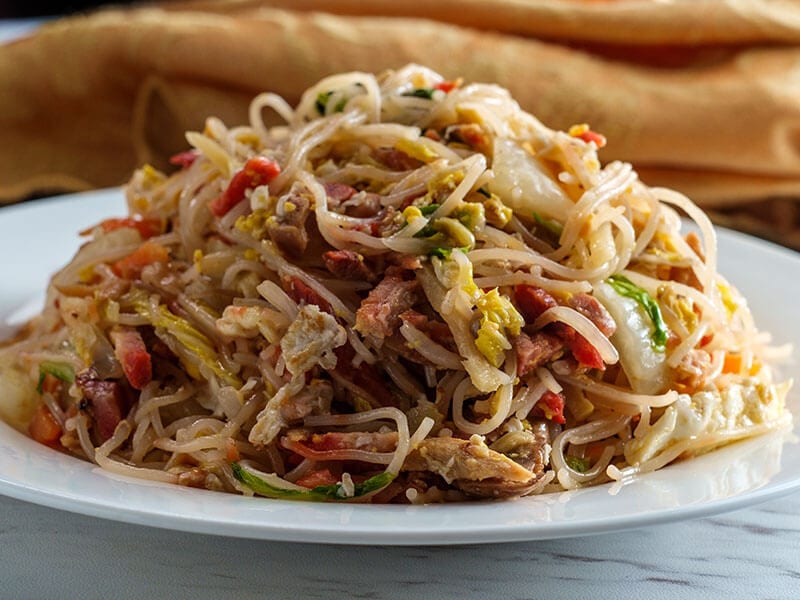
So you like noodles that are soft to bite, thin yet mouthful, gotcha! Plus, if the slurping sounds and table manners are not a problem for you, without a doubt, Chow Fun is your choice.
Chow Fun has a flattened and widened shape that looks like a long strip, and it uniquely comes in a thick cut, always. It resembles tagliatelle pasta a little and sometimes looks like lasagna.
Yet, unlike pasta, which is yellow and dry, the Chinese noodle has white-flour color and always seems somewhat soggy. Hence, be careful cooking it! Because it is ridiculously delicate insofar that you could easily turn one of the most famous Chinese essences into a mess.
Fresh Chow Fun noodles will look something like this. These long white noodles look absolutely stunning.
Taste And Texture – Have A Bite And Find Out
You’re wondering whether these two noodles taste good or not, are their texture soft or extremely chewy? Stop asking those questions and jump right into the taste test. The answers are lying just right here for you to find out.
As Noodles
They both had this one mild, sweet flavor as they were initially made, without any condiments or seasonings. However, to speak of them as dishes, they could easily convince all walks of life since they have many heavenly flavors coming from many Asian ingredients and herbs.
For starters, Mei Fun is way firmer, and thicker than Chow Fun in terms of texture. And it is advised that you blanch Mei Fun for at least 30 seconds. Mei Fun is meant for people who love a bit of chewy quality and the slippery texture of the noodles.
In contrast, Chow Fun mostly comes in this ready-to-cook condition as it always has to be fresh to serve, and you don’t have to soak it first as you did with Mei Fun. Plus, its texture is more or less the same as Mei Fun but more slippery, and easier to break yet elastic as you bite.
Care to make homemade Chow Fun. Here is how to do it in a fast and furious style!
As Meals
Moreover, as meals, these two well-known noodles usually go by as some stir-fry dish or soup (made from chicken, beef, or pork broth)
For the stir-fried version, both of the “Fun” would rather have this oily and smoky smell as the highlight feature. In “Chicken Mei Fun”, it would taste sweet and sour, plus a little saltiness of soy sauce, and the herbal-like, garlic-like flavor from the ingredients.
Other than that, you’d love the tenderness of the juicy shredded chicken soaked with the thickened, brownish sauce. And the fact that the veggies are crunchy is a huge plus for this dish, in terms of texture.
Aside from that, a single Mei Fun noodle is thin yet chewy, therefore, requiring you to eat a mouthful of many individual noodles at one eating for the most fulfilling enjoyment.
In regards to Chow Fun, you could try “Soup Chow Fun with Sliced Beef” or Phở to be convinced by the strong beefy taste coming from the beef bone stocks as you first try the soup before this slight sweet comes at the end of your throat.
What’s more, the sliced beef might look thick-cut, but they are as tender as cotton candy, yet their juice is high-seasoning. Since these noodles are long and wide in size but delicate in texture, you can only eat one or two strips at a time to enjoy them fully and prevent them from breaking.
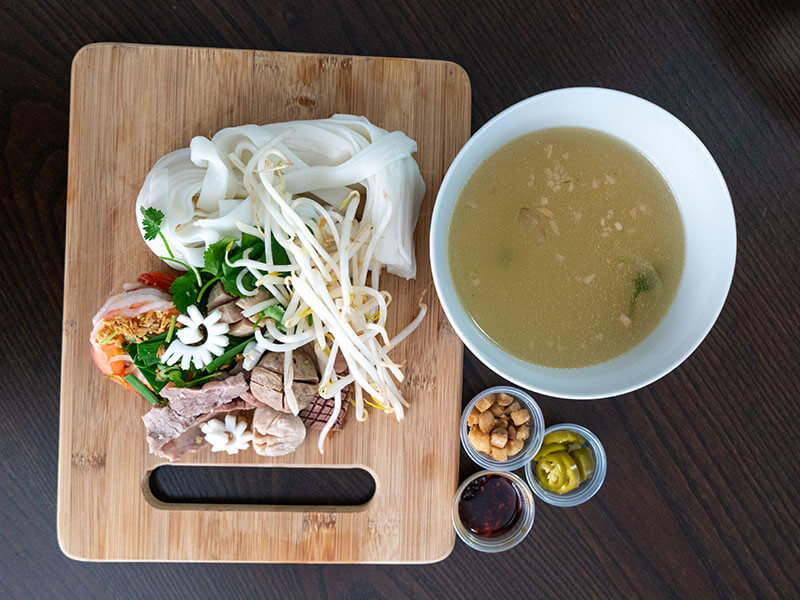
How Are These Noodles Commonly Cooked?
There is a reason for Mei Fun and Chow Fun to be the staple dish of Asian countries like Taiwan, China, Singapore, and Hong Kong. Surprisingly, the answer lies in how you cook those dishes because you might notice that Mei Fun and Chow Fun recipes are somehow similar.
One of the most popular ways to serve Chinese noodles is “Wok Hei”, roughly translated as stir-frying with a wok (carbon steel Chinese pan). By tossing cooking flames into your foods, this method brings to your dishes a uniquely smoky smell and oily taste.
The most common preparations for Mei Fun are stir-frying, soup, salad, and spring roll. Especially stir-frying, which includes wet-frying (more sauce) and dry-frying (no sauce), is the most typical way to cook your Mei Fun. In this aspect, Mei Fun outweighs Chow Fun.
If you order “Chow Fun” at any random restaurant, most of the time, the staff will assume you want the stir-fried version. Soup Chow Fun with broth and mostly topped with fish or beef ball, beef slices, which is as delicious as well, but it is just not that sought-after by food lovers.
The wok cooking technique is one of the most sophisticated and eye-pleasing art in Chinese cuisine.
Ingredients For Your Best Noodles
Generally, any combination of proteins and vegetables works for these two “Fun”, as mentioned before, you can use your creativity but bear in mind to stay within those boundaries.
Don’t get me wrong, whatever ways you want to cook these noodles are fine, and you can always be creative since there are various Chinese noodle recipes + (Chinese noodle recipe). Still, it is best to cook with those traditional methods since they have lasted centuries for a reason, right?
Mei Fun
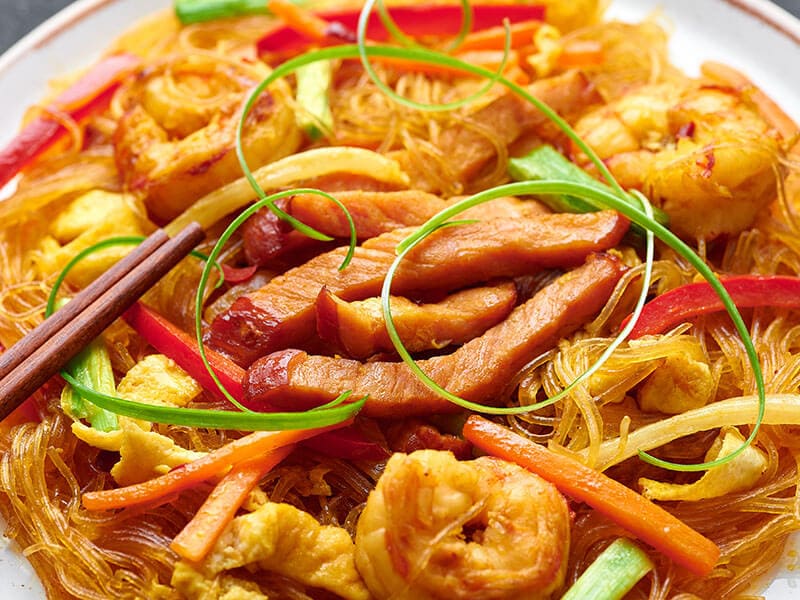
Mei Fun is often paired with shredded Chicken or Pork, but for Chow Fun, it goes well with thick-sliced Beef (5). That is the texture story again because depending on different textures, you will need different types of protein.
However, in some Southeast Asian countries like Vietnam, Mei Fun is used as the filler for their iconic spring roll, or as the primary carbohydrate source in the Singapore–style noodles that includes the famous Cantonese roast meat from Hong Kong (char siu) (6).
Chow Fun
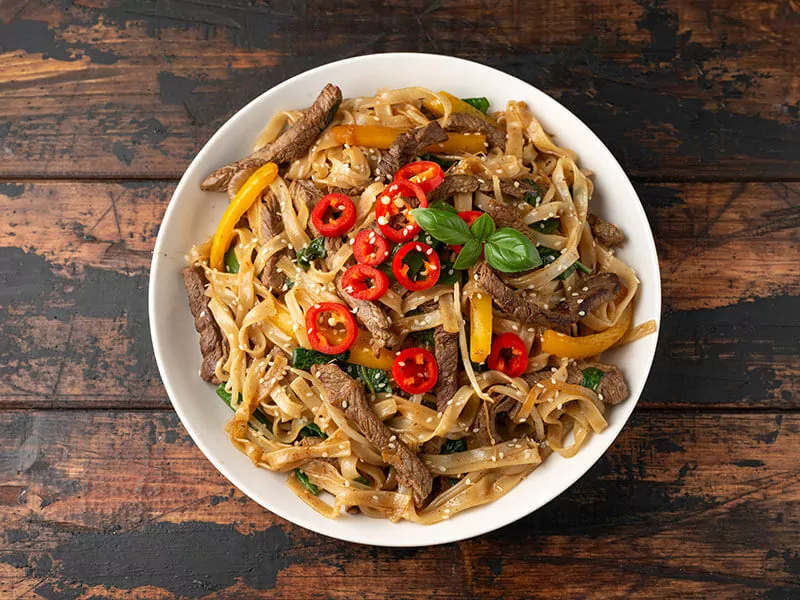
Chow fun, in fact, pairs with marinade pork or beef organs, or seafood such as squid, and shrimp. Those, along with some typical protein sources like Mei Fun’s, are the go-to choices of lots of Vietnamese people.
Besides, bean sprouts, chives, green/yellow onions, chilies, and minced garlic are the typical ingredients for the sauteeing step. More importantly, marinating and seasoning processes require those Asian-represent condiments like oyster, sesame, and soy sauce.
Vegetables such as julienne (sliced carrots) and thin-sliced cabbages are recommended for the best texture as well as a flavor combination, specifically for those vegetarian dishes.
Simple Recipes Make Perfect Food
If you’ve read to this point, don’t hold back from making your own “Fun”. And don’t worry because I’ve got some fascinating Chinese recipes + (Chinese recipes) that might suit your taste. Trust me, these recipes have been waiting for you to make them real.
Mei Fun Recipes
Let’s get started with those amazing Mei Fun dishes. If you like something sweet and sour, thin but firm, and salty yet tastes just about right for your current craving, I hope these simple recipes can satisfy your picky appetite.
Chicken Mei Fun
If you love the chicken‘s tender texture and chewy Asian noodles are your go-to choice, then this Mei Fun dish is made for you. It has this brownish sauce coming off from the juicy chicken mixed with a bunch of different spices like garlic, ginger, chilies, and green onions.
More noticeably, the marinated shredded chicken smells super convincing as it has soy sauce, oyster sauce, and sesame oil, which both enhance the flavors of the chicken, making it richer in fragrances.
Now is the happy time for your appetite! You better hold your chopstick tight because you will not stop until you finish the whole dish.
Mei Fun Soup
“Mei Fun Soup” is for those like myself who enjoy sipping hot, flavorful soup slowly straight from the bowl of their favorite noodles. You might be thinking something like “Soup? Way less complex and easier to cook”. I am afraid you might be wrong this time.
The soup would strike anyone hard the first time they ate it because its flavor was intensely high–seasoning. The same favorite toppings as stir-fried Mei Fun but with a stronger taste to every soup-soaking noodle you eat. What are you waiting for? Try this Chinese delicacy now.
Chow Fun Recipes
You Chow Fun lovers won’t have to wait any longer, this one section is for you. You might get bored of those thin noodles in Mei Fun and want a new change in your diet, Chow Fun is the choice you’re looking for, its wider texture can quickly make you feel full.
Beef Chow Fun
When you visit China, southeast China, in particular, I can almost guarantee that you will occasionally hear about this Cantonese staple dish + (Cantonese foods), Beef Chow Fun, along with other foods like Wonton noodles, Dim Sum, Soy Sauce Chicken, etc.
You know what? This dish will give you the most enjoyable guilt trip ever since you will regret the calorie intake. Still, you can’t stop chewing the juicy, tender thick-cut beef, which is marinated with the most flavorful Asian spices in your life. Hold your chopstick tight and try it ASAP!
Hawaii’s Local-Style Chow Fun
Aloha, Hawaii and Chow Fun? I guess you are confused with this weird combination, right? In case you love something as much as Chow Fun but still want to try new dishes different from those traditional ones. This one is the Chow Fun – Hawaii version that you can only have in Hawaii.
This Hawaii version is the perfect one for you if you don’t like either the original saucy Chow Fun with dense beef gravy or the regular Chow Fun, which is too dry. This one is the perfect balance of those two.
Learn how to cook this Hawaii version of Chow Fun! What a great match-up between two cultures.
FAQs
Eating is the fun part, and the below section here will help you answer some of the most-asked questions, in case you are having trouble with these two noodles.
It’s Time For Your Decision!
If you read to this point, I believe you have your answer for which “Fun” is your favorite. Even better, you fall for them both. Despite whatever type of noodles you love to eat, do not mix up the recipes from one to another.
Chow Fun recipes should be cooked with Chow Fun noodles, and the same goes with Mei Fun. I guess you would not want to eat your KFC chicken wings with Chipotle marinade recipes, right?
Agree with me on how ridiculous that combination would have been and what a “betrayer” you would have become towards your favorite food. Let’s be a real foodie, and respect the recipes as well as the food itself.
References
- Foodbankonline.org. 2022. [online] Available at: <https://foodbankonline.org/wp-content/uploads/2020/04/WG-Chow-Mein-Noodles.pdf>.
- Nutritionix.com. 2022. {{MetaTags.title || ‘Nutritionix’}}. [online] Available at: <https://www.nutritionix.com/food/chow-fun>.
- Nutritionix.com. 2022. {{MetaTags.title || ‘Nutritionix’}}. [online] Available at: <https://www.nutritionix.com/food/mei-fun>.
- En.wikipedia.org. 2022. Chopsticks – Wikipedia. [online] Available at: <https://en.wikipedia.org/wiki/Chopsticks>.
- En.wikipedia.org. 2022. Beef chow fun – Wikipedia. [online] Available at: <https://en.wikipedia.org/wiki/Beef_chow_fun>.
- En.wikipedia.org. 2022. Rice vermicelli – Wikipedia. [online] Available at: <https://en.wikipedia.org/wiki/Rice_vermicelli>.

